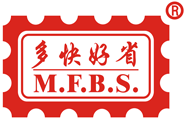Why adhesives can produce bonding, there have been many theories in the theoretical community, and there has been no conclusion until today. In practice, there is still no single adhesive theory that can explain all bonding phenomena. For a hot melt adhesive film, what theory is used to explain its bonding? Let's first look at what theories are glued.
First, mechanical theory
Mechanical theory, also known as nail theory, popularly speaking, is the glue through the penetration of the material surface of the gap curing, the formation of a small nail, resulting in mechanical bonding, which makes the adhesive cured and the substrate mechanically fixed together. Because the representation of solids is not completely smooth, under the microscope the solid surface is composed of countless irregular peaks and valleys.
The mechanical bite of adhesives is the main bonding factor for multi-space-based materials such as foam. For the bonding of non-porous materials, mechanical grinding is much better than untreated. We often use this method of mechanical grinding in leather bonding and rubber bonding.
Second, adsorption theory
Adsorption theory holds that bonding is caused by molecular contact between two materials and produces surface forces. The process of contact between the adhesive and the surface of the stuck is called "wetting it". For adhesives, the surface tension should be lower than the critical surface tension of the solid to achieve the wetting effect.
Most organic adhesives can easily wet metal solids. However, the surface tension of many solid organic substrates is less than that of commonly used adhesives. Good wetting requires that the adhesive should have a lower surface tension than the substrate, a fact that the part shows that organic adhesives (such as epoxy adhesives) have good adhesion to metals, but poor adhesion to untreated polymer substrates such as polyethylene, polypropylene and fluorocarbons. After the adhesive is wetted and contacted by the adhesive, the bonding can be achieved by the interaction force between the molecules, and four types of chemical bonds can be generated in the bonding cohesion.
Third, the theory of static electricity
The electrostatic theory holds that the bonding exists because there is a double layer at the interface between the glue and the adhesive, which is caused by electrostatic electricity. This electrostatic force itself is anti-separation. The rationality of this theory is confirmed by the discharge phenomenon that occurs when the cured adhesive is stripped off on the substrate.
Fourth, the theory of diffusion
Diffusion theory holds that the presence of adhesive forces arises from the mutual diffusion between the glue and the molecules to be bindered. When both the adhesive and the binder are polymers, there is a rationale for this theory in the case that both have long molecular chains that can be moved. For example, solvent-based bonding or hot-melt bonding of thermoplastics is considered to be the result of mutual diffusion between molecules.
Although the problem of bonding mechanism has been inconclusive, understanding the various bonding theories helps us to grasp the basic requirements of bonding. Perhaps bonding is not something that a theory can explain in the first place. For hot melt adhesive films, different bonding theories should be used for bonding different materials, such as bonding used on textiles and used on plastics, and different theoretical models will apply. In general, in various bonding mechanisms, mechanical theory and diffusion theory are closer to the actual situation of hot melt adhesive film bonding.
(Some of the materials on this website come from the Internet, if the information displayed on this website infringes your copyright or other legitimate rights and interests, please notify us in time, and this website will be deleted in time.) )

Address: No. 3, Fuye Street, Jiangmen, Guangdong
Tel:0750-3809010 / 3809017
E-mail:info@mfbshk.com / mfbs@mfbshk.com


WeChat Online Service
Online Service

better and cheaper
Seamless fit material
